First step: form a white cross
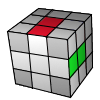
I assume that at this point you are familiar with the notation of the Rubik's Cube and you can solve the cube with the beginner's method. If not then I strongly recommend you visit these pages to avoid any confusion.
It's up to you which face you want to start with, let's make a convention that for the sake of this tutorial we'll start with the white face. Our goal is to form a cross at the bottom of the Rubik's Cube in a way that the sides of the white edges match the lateral centre pieces. Experienced cubers foresee the steps when they inspect the cube and they plan this step. In most cases you'll need 6 rotations to complete this phase, and you should never need more than 8.
White face always down
Hold your cube in your hands with the white centre facing down to improve your solution time. With a lot of practice you won't need to see the white cross because you will know what's going on down there according to the color scheme of your puzzle, your moves and what you see on the top. This way you don't have to turn your cube around, saving this way a lot of time. Some speedcubers prefer solving the cross on the left side but if you choose to make it on the bottom you'll have a nice lookahead and is more suitable for finger tricks. The only bad thing is that it's weird for beginners and you can't notice in time if you messed the cross up.
It would be more intuitive to solve it on the top and turning upside down when it's done, but you'll need to learn it this way if you want to reach times below 20 seconds. To encourage you I have to tell that the knowledge of the next step (F2L) will help you a lot in the understanding of the manipulation of the cube upside down. You will discover the advantages of this perspective and you will admit that this is the best way of doing it. And if you really want to master the Rubik's Cube I recommend you to examine the cube and try to plan all the necessary steps and execute them without watching.
Examples - Basic idea
The examples below show a couple situations you can meet. The first one is very easy, you just have to turn the edge piece to the correct position. The second shows how to reorient a piece. The third example demonstrates how to place two pieces in one step. The last step shows the steps to fix the Superflip (the "most scrambled Rubik's Cube") in only 6 moves.
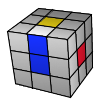
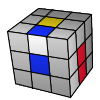
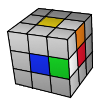
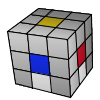
This first step of solving the white cross is actually an intuitive stage of the solution process. We couldn't even cover every possible situations because at this stage there are so many cases. Almost everyone could get this far without learning algorithms. But you'll need to practice forming the white cross to make it efficient. Do it smoothly, without stopping and with the cross facing downwards. If this works well, you can proceed in our tutorial to the second step: F2L